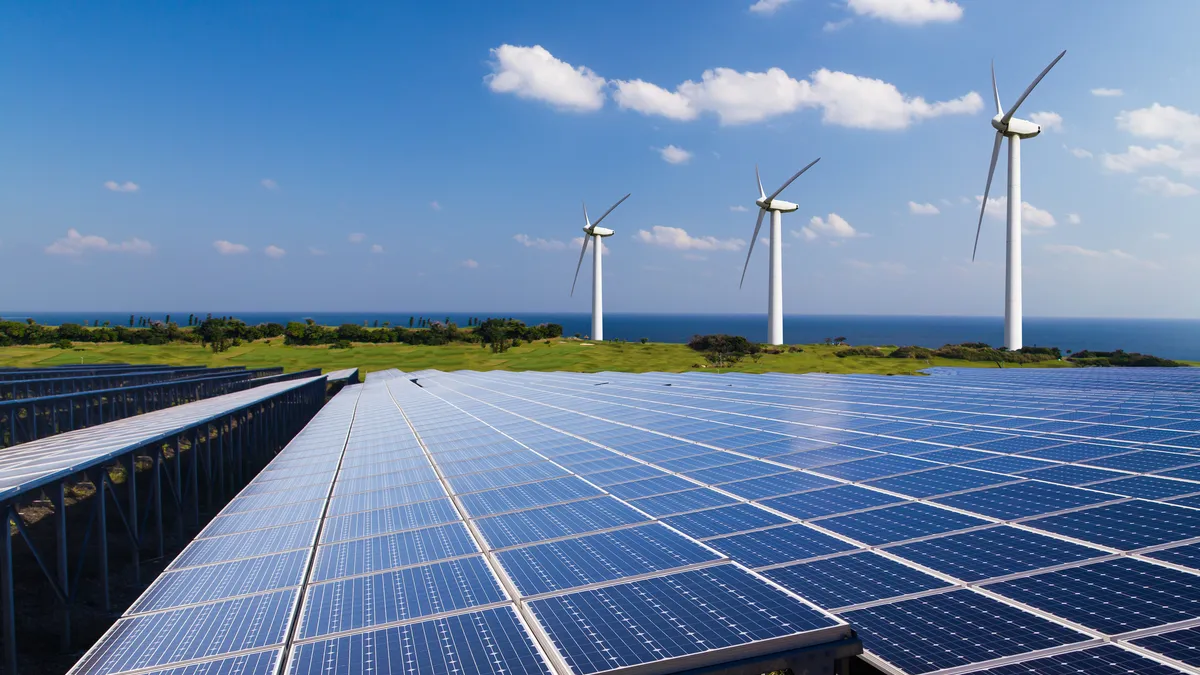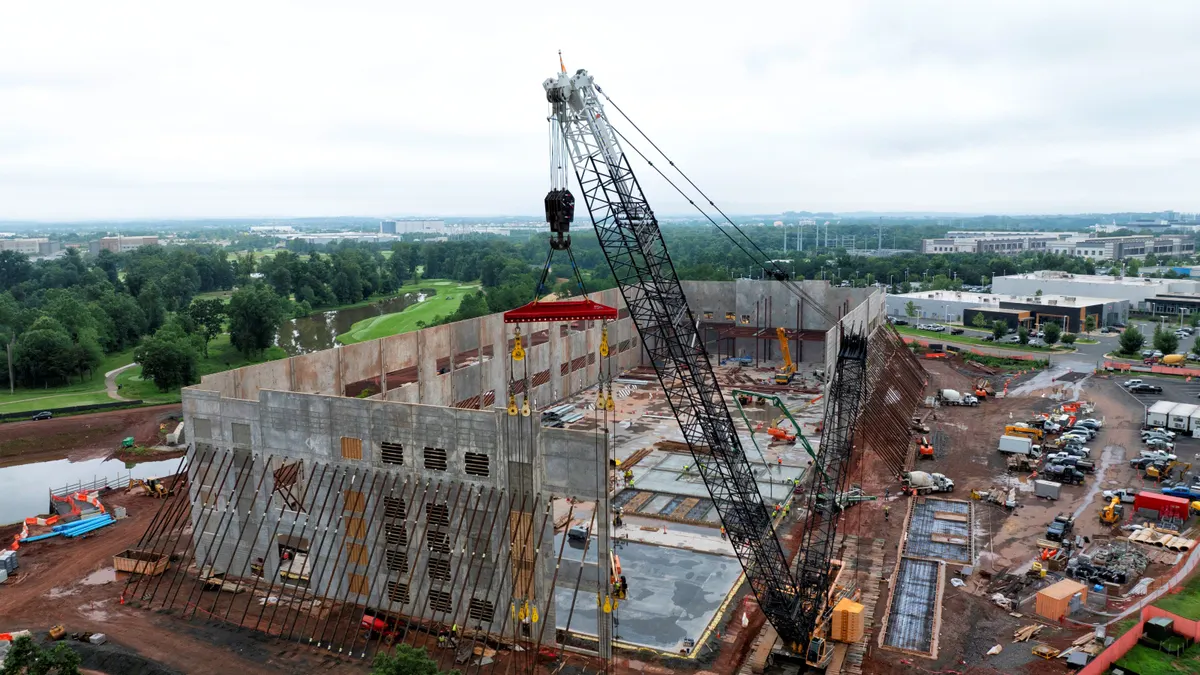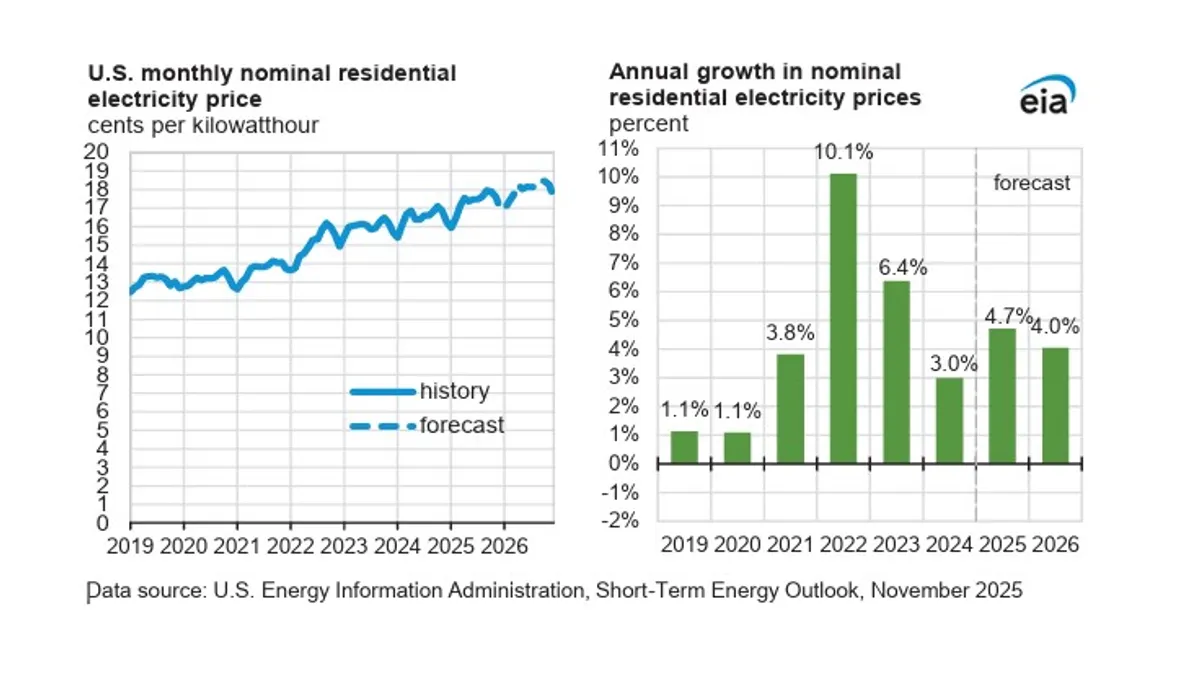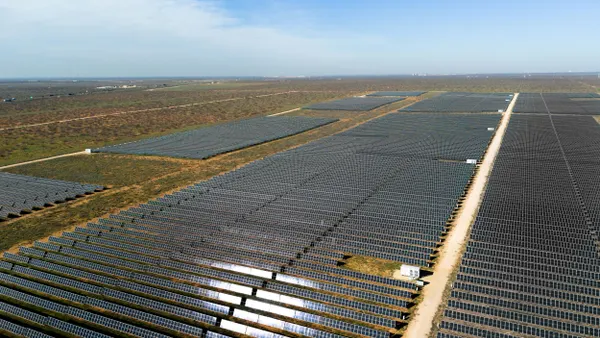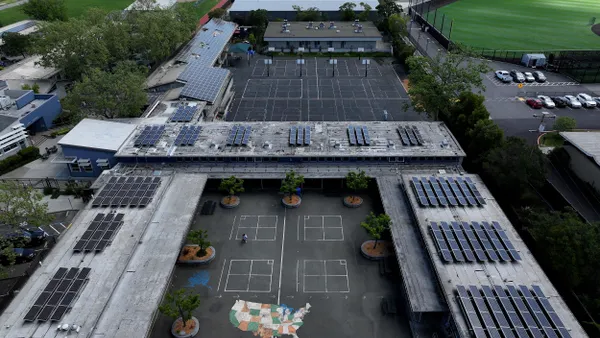Dive Brief:
- Eight of the top 10 states for utility-scale clean energy deployment in the first quarter of 2025 voted Republican in last year’s Presidential election, the American Clean Power Association said on Thursday.
- Texas was the runaway leader with more than 1,700 MW of wind, solar and energy storage deployments and a 20% year-over-year increase in total clean energy capacity. Florida, Indiana, Ohio and Wyoming rounded out the top five, ACP said.
- The 7.4 GW of new clean power capacity in the U.S. was the second-strongest Q1 on record. Energy storage was the fastest-growing segment, with nationwide battery storage capacity increasing 65% year over year.
Dive Insight:
Total utility-scale clean energy deployments in the first quarter of this year came in 9% shy of the record-setting first quarter of 2024, when developers commissioned 8,089 MW of wind, solar and storage capacity, ACP said.
ACP’s data reflects the increasingly broad geography of utility-scale solar and storage deployments. Indiana quadrupled its energy storage capacity, adding 435 MW, while Illinois, Mississippi, Wisconsin and Ohio all deployed far more solar than California. Total U.S. clean energy capacity sits at about 320.9 GW — of which, 80.7 GW is in Texas, ACP said.
The clean power development pipeline expanded as well, growing 12% year over year to reach about 184.4 GW and an estimated $328 billion in completed value. But that marks a slowdown from a year ago, when fully permitted clean power capacity under construction or in advanced development rose 26% from Q1 2023.
Developers have canceled more than $14 billion in clean energy projects so far this year amid uncertainty over the future of federal tax credits for clean energy investment, production and manufacturing, according to the consulting group E2.
ACP’s latest report hinted at the scale of the potential risk to state and local economies if the House GOP’s proposed rapid wind-down of energy tax credits remains in the final budget reconciliation bill that now sits before the Senate.
Domestic manufacturing and energy production investments now generate $3.4 billion in annual tax revenue and landowner payments in rural communities and have created nearly 650,000 jobs, ACP said.
“We have the technology, investment capital and workforce required to build the $300+ billion of clean energy projects in our development pipeline,” Grumet said, describing those projects as shovel-ready. “The greatest threat to a reliable energy system is an unreliable political system.”
Utilities and independent power producers across the South, Midwest and West have proposed dozens of gigawatts of new gas-fired generation projects since 2023, including an up to 4.5-GW project in western Pennsylvania that could begin operations next year and eventually become the United States’ largest gas power plant.
But utility-scale gas power plant developers that have yet to order turbines may not get them for years as executives for major turbine OEMs GE Vernova, Mitsubishi and Siemens Energy warn of multi-year backlogs.
Solar installations with signed interconnection agreements are comparatively fast to deploy, according to the U.S. Energy Information Administration and Lawrence Berkeley National Laboratory. In 2023, the median solar project took 25 months from interconnection signing to commissioning and only about 19% of solar projects had to delay commissioning — a decrease from 23% in 2022, they said


